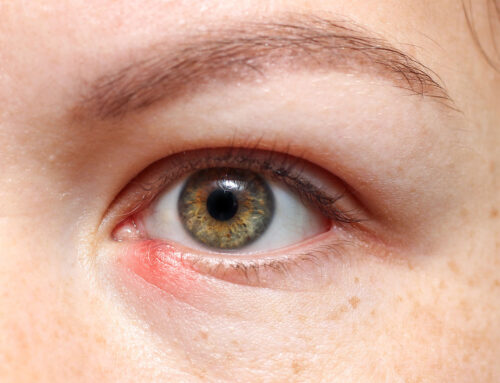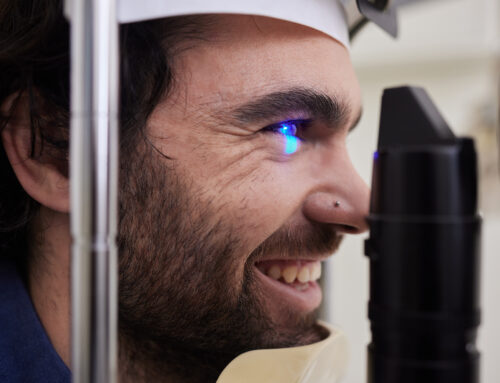Today, we get to talk about one of my favorites: the EDOF IOL – extended depth of focus intra-ocular lens. I’ll get it right out in the open; big, big fan of this lens here. If you ever hear me say, “Two words, seven letters, say ‘yes’ and you’ll make me the happiest man alive.” Then I’m either about to ask you to marry me or about to talk about the EDOF IOL. But it’s usually the second one.
Glasses-Free Vision
In reality, I’ve got a genuine phobia of seeming like I’m trying to sell something, so I don’t get quite that direct when talking about EDOF IOLs (or marriage, actually). But when a great candidate for clear lens replacement or custom cataract surgery asks me what lens I’d recommend, EDOF is my most common reply. We’ll get into why, but if you want to skip all that and stop reading after this paragraph, here’s a one-sentence version: We’re aiming for the maximum amount of glasses-free vision and the minimum amount of “extras” (e.g. halo, fuzziness, etc.), and EDOF IOLs are oftentimes the best way to do that.
The Ray One EMV
There are a lot of ways to extend depth of focus for your eye. Some (like AMO’s Symfony) work using rings, some using the IOL shape, and one even uses a tiny aperture (similar to increasing a camera’s f-stop). The EDOF IOL that I’ve come to really like is called the Ray One EMV. It uses the front and back curvature of the IOL to extend the focal range. So it doesn’t have rings, and it doesn’t block light coming in.
“So that’s better?” you might ask. Sometimes! I know I say it a lot – that the specifics of your eye matter more than any other factor in picking the correct IOL – but it’s so true. For the Ray One, the reason I end up recommending it more often is because after all the diagnostics and discussion, it’s oftentimes the clear winner. When it isn’t, no worries! It means another type of IOL would be even better for you.
Which leads us to where the Ray One would fall short for some folks. It’s not a winner for people that want excellent near and distance, and also need both eyes to see identical to each other. There’s a reason; you can only extend depth of focus so much before you start to get unwanted extras (the aforementioned halos, fuzziness, etc.). So a lot hinges on (1) how much distance and near vision can we get with a Ray One in one eye and (2) how much distance and near vision can we get with a Ray One in both eyes.
There are folks where their category (1) just knocks my socks right off. They get the Ray One in their first eye, and they’ve got all the distance and near they need. Easy! We just do the same thing in the other eye. But more often, it’s category (2) that determines our results. We get clear distance and intermediate (thanks to EDOF) but not quite enough near for easy reading. That’s where the magic happens, however, and why I like this IOL so much.
The maximum amount of glasses-free vision happens when you’ve got the minimum difference between right and left eye to have distance and near vision. Monovision contacts: giant difference between the two eyes. Blended vision IOLs: less difference. EDOF IOLs: the minimum difference between the two eyes. (Quick aside, this is where the EMV in the Ray One EMV originates. It stands for “enhanced monovision,” I’m still undecided on whether this name creates or clears confusion about it.)
An example (throw it out if it doesn’t help): If you get a Ray One for maximum distance in your first eye, and find that it’s also working pretty good for near, it just takes a little nudge of extra near power in the second eye to fill in the rest of the near focus. Simply put: good reading vision with a monovision contact might require that reading eye to see 20/200 in the distance, but good reading vision with a Ray One EMV might allow that eye to see 5 or 6 times better in the distance. Sometimes (in the old “results not typical” trope) that reading eye can do 20/20 in the distance just like the “distance vision” eye.
Blending the vision between the two eyes is much easier if the difference is 20/20 in one eye and, say, 20/30 in the other. (Just as it’s much harder if it’s 20/20 in one eye and 20/400 in the other.) EDOF IOLs for good candidates make the former option possible. Easy distance and near is so much more fun than labored distance and near vision. And the best way to find out if you’re a candidate is to come see us! I promise not to bring up marriage, but I hope we can talk about EDOF IOLs.
If you’re interested in cataract surgery in Orlando, contact us today!




